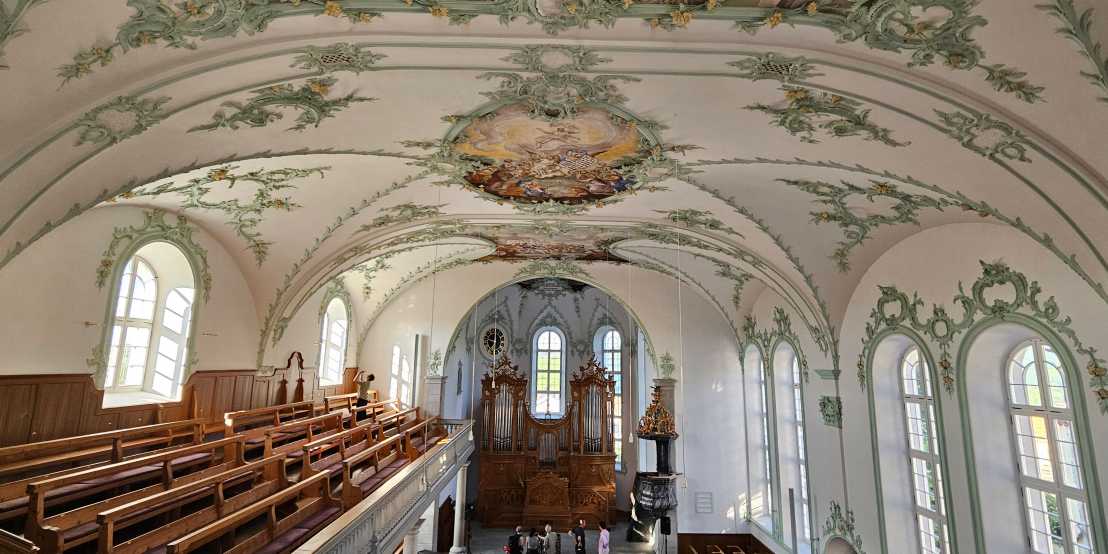Call for Papers: Idioms of Rococo in Switzerland at the 6th Swiss Congress for Art History
Session Conveners: Prof. Dr. Maarten Delbeke, Dr. Nikos Magouliotis, and Dr. Noelle Paulson.

The external page 6th Swiss Congress for Art History will be held in Geneva from 7 to 9 September 2026. Organized jointly by the Swiss Association of Art Historians (VKKS | ASHHA | ASSSA) and the Division of Art History at the University of Geneva, the congress is aimed at art historians, art researchers and experts from all fields (including both practice and theory), and all institutions. You are invited to submit proposals for 20-minute papers. Acceptance decisions will be made by the conveners of the individual sessions, supervised by the advisory board of the 6th Swiss Congress for Art History.
We welcome contributions in German, English, French, and Italian, in the hope of assembling a multilingual session that reflects the topical and institutional diversity of the field and fosters young academics.
Please send an abstract (1 page, max. 3ʹ000 characters) and a short curriculum vitae including institutional affiliation and contact details to all three session conveners Maarten Delbeke, Nikos Magouliotis, and Noelle Paulson by 12 September 2025. Please also CC the Congress Bureau of the 6th Swiss Congress for Art History in Geneva at . All speakers will receive a contribution to their travel and accommodation costs and will be exempt from the congress registration fee.
Session: Idioms of Rococo in Switzerland.
The 18th century transformed Switzerland: proto-industrialization brought new material wealth to rural homes, while mercantile elites built mansions to fit increasingly cosmopolitan tastes. Simultaneously, confessionalization continued to alter the religious and architectural landscape. Switzerland was a territory divided by language, class, and religion, yet visually unified through the broad adoption of Rococo ornament, from the facades of urban mansions to rural interiors, to decorations for Catholic and Protestant churches.
We argue that the rocaille’s ubiquity in Swiss art and architecture should not be seen as the homogenizing effect of a cultural hegemony. Rather, it may be understood as a process where different groups adapted it to their circumstances and generated distinct decorative idioms, which could serve antagonistic identities. There was not just one Swiss Rococo, but many.
The project “Swiss Rococo Cultures” examines this hypothesis by focusing on East Switzerland, but we are interested in mapping parallel cases throughout the country. We welcome papers that deal with any of the following questions:
- Which agents facilitated Rococo’s dissemination? How did the idiom transform through different artistic media and scales, from miniatures to buildings?
- How could Rococo and its iconographies adapt to different social spheres? How was this ornamental repertoire applied to Catholic and Protestant churches?
- How did the Rococo relate to the emerging spirit of Swiss patriotism and nationalism at the time of the Helvetic Society?
- When did the Rococo end? Can its continued use in folk art into the 19th century help us revise canonical chronologies? What do current practices of collection, display and preservation tell us about Rococo’s long history?
- How does the specific case of the Rococo in Switzerland challenge notions of the idiom? How might we consider the Rococo to be a visual repertoire that crosses boundaries of geography, language, confession and class?
Deputy head of Inst. History and Theory of Architecture
Geschichte und Theorie der Arch.
Stefano-Franscini-Platz 5
8093
Zürich
Switzerland
Geschichte und Theorie der Arch.
Stefano-Franscini-Platz 5
8093
Zürich
Switzerland
Geschichte und Theorie der Arch.
Stefano-Franscini-Platz 5
8093
Zürich
Switzerland